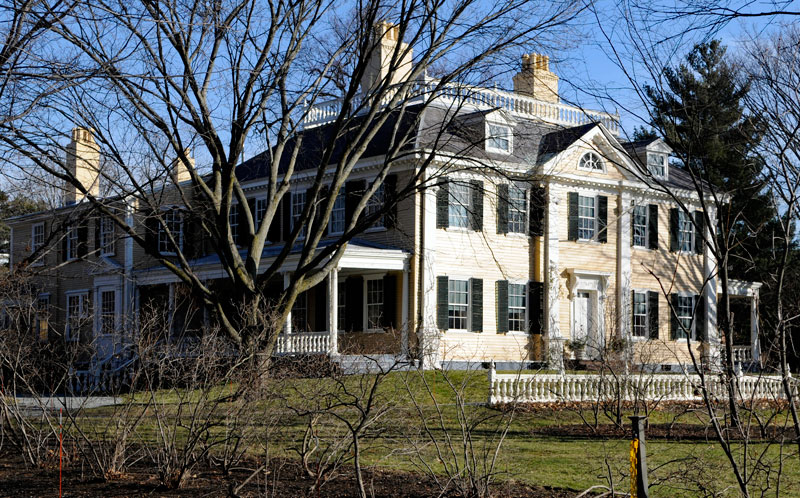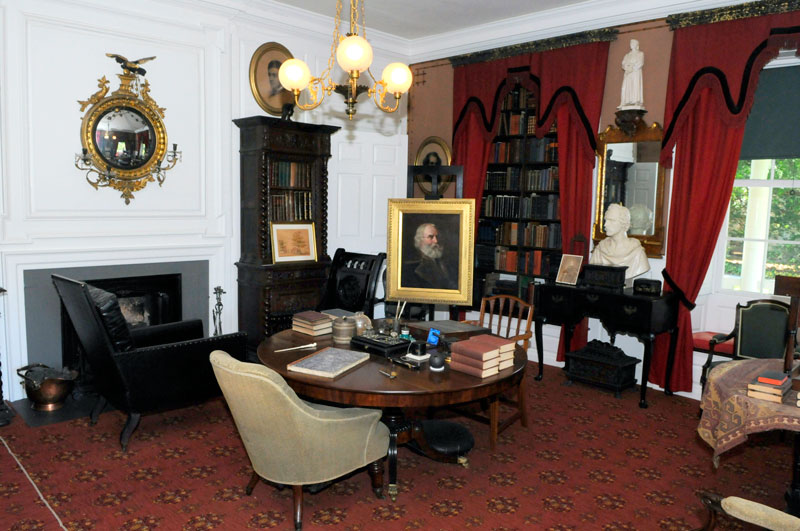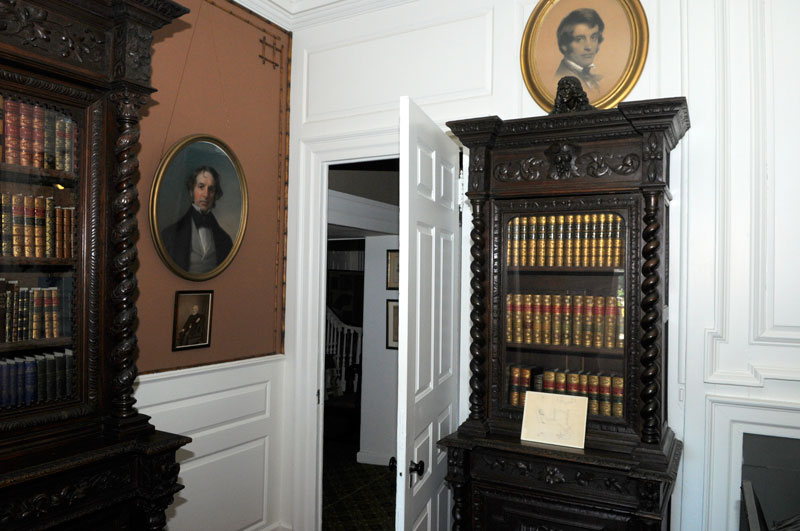Washington—and Longfellow—Slept Here
The untold story of a house that accommodated soldiers, statesmen, and poets By Nicholas A. Basbanes Nicholas A. Basbanes, author of On Paper: The Everything of Its Two-Thousand Year History, was recently awarded a NEH Public Scholar fellowship for a dual biography of Henry and Fanny Longfellow, to be titled Cross of Snow. His other books include About the Author, Editions & Impressions, A World of Letters, A Gentle Madness, Every Book Its Reader, Patience & Fortitude, Among the Gently Mad, and A Splendor of Letters.
There was a time not so long ago when the graceful Georgian mansion at 105 Brattle Street in Cambridge, Massachusetts, known for decades as Craigie House for a former owner, was one of the most visited landmarks in the United States, a mecca for literary pilgrims and Revolutionary War buffs alike—a must-see destination on the bucket list of just about every visitor to New England with a deep appreciation for the past.
Known today as the Longfellow House—Washington Headquarters National Historic Site, the building is remarkable for having been ground zero for two distinctively significant episodes in American history, one that took place over nine months in the eighteenth century, the other spanning five decades of the nineteenth, with the first, in a very palpable way, helping define the character of the second.
Located just a half-mile due west of Harvard Yard in the aptly nicknamed neighborhood of Tory Row, the elegant house was built in 1759 by Colonel John Vassall Jr., a staunch Royalist who fled Massachusetts with his family on the eve of rebellion, and repaired hastily to England, never to return. Confiscated by the Provincial Congress and used briefly as a barracks for the Marblehead Regiment, the building was spruced up and turned over to General George Washington of the Continental Army on July 2, 1775, for use as his official residence and command headquarters.
Over the next nine months, strategy sessions and councils were held that would greatly influence the conduct of the war, with visitors that included John Adams, Benjamin Franklin, John Hancock, and Aaron Burr. “Washington himself had but just ceased to be a militia colonel,” George Washington Greene, a lifelong friend of Henry Wadsworth Longfellow and frequent visitor to the house, wrote in an 1872 essay about the residence for The Aldine, a prominent art journal of the period. “Under the Craigie house roof he became a general.”
After the war, the bright yellow mansion was bought by Andrew Craigie, Apothecary General for the Continental Army during the Revolution—he was the nation’s first pharmacist—and a successful landowner and speculator afterwards, albeit who fell upon hard times, requiring his wife, Elizabeth, to rent out rooms to Harvard faculty members after his death. It was under these circumstances that the thirty-year-old Longfellow, newly installed as Smith Professor of Modern Languages and Belles Lettres at the college, became a boarder in 1837, fully cognizant from the outset of the iconic status of his new digs.
One of the lesser known biographical details involving Longfellow is that in addition to being an extraordinarily popular poet and man of letters with admirers and readers throughout the world, he was fluent in ten languages he had learned during two extended trips abroad: French, Italian, Spanish, German, and Portuguese on his first European adventure fresh out of college; Swedish, Danish, Finnish, Old Icelandic, and Dutch on the second ten years later; Latin and Greek he had mastered previously.
When he returned in 1828 to take up duties as a twenty-two-year-old professor at Bowdoin College in Brunswick, Maine, he compiled and published nine textbooks to use in his classes. In one instance he prevailed upon his Boston printer to supply proof sheets as they came off the press so he could pass them around among his students for immediate use. As a collateral duty, Longfellow also held the position of college librarian, in which capacity, according to one institutional history of the collections, he transformed “an unused repository of Scripture to a more functional one that reflected in its collection contemporary European culture and the trend in American education toward the study of modem languages and literatures.”
















